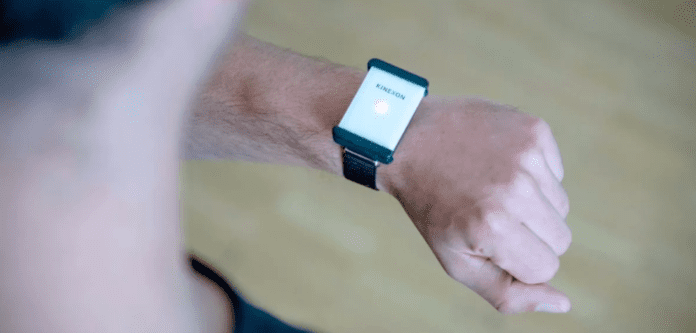As many organization turn to tech to help in adjusting to operating during a global pandemic, the Federal Communications Commission has granted the National Football League permission to temporarily use C-Band spectrum during the 2020-2021 football season for low-power, body-worn wireless sensors for players and staff, to promote social distancing and COVID-19 contact tracing.
The NFL told the FCC that for this season, which starts tomorrow, it is “doing everything possible to ensure that the teams, their staff and the NFL operations personnel maintain safe distances and that, should a case of coronavirus occur, that there is contact tracing in place so as to be able to limit the spread of the virus.”
Part of that has been contracting with German IoT company Kinexon, which already serves professional sports organizations including the NBA with player-tracking sensors during games, for a sensor-based contact tracing solution which “will help to ensure adherence to physical distancing guidelines when players and staff are traveling to away games,” according to the NFL’s filing with the FCC.
“Each player and each staff member of each team will be issued wearable tags and they will be on at all times during practice sessions, games, and times of team travel,” the NFL said. The organization estimates that it will deploy up to 2,000 such sensors across the country during the course of the season.
Kinexon was able to rapidly repurpose its technology, which promises centimeter-level positioning accuracy and a cost as low as 70 cents per sensor per day, for the purpose of proximity alerts and contact tracing. While the SafeZone offering was envisioned for employee use in large factory-type settings, Kinexon said in a blog post that it quickly garnered interest across a variety of verticals, including food and beverage companies and sports.
Kinexon uses Ultra Wideband (UWB) technology, which it argues has better reliability, responsiveness, accuracy and indoor usability than other wireless technologies like Bluetooth, Wi-Fi, NFC or GPS that smartphone-based contact-tracing apps would rely on. (UWB isn’t well-suited for widespread public use because of the lack of UWB sensors in smartphones, the company said in a blog post.) UWB (802.15.4z) has been around for years but hasn’t been able to compete commercially with the success of Wi-Fi and other short-range wireless technologies — but it has been seeing something of a renaissance in the past year, with a new group called the Fine Ranging (FiRa) Consortium launched last August seeking to promote a renewed UWB ecosystem with an eye toward its use in IoT. (Read more about UWB and FiRa Consortium here.)
Kinexon’s SafeZone sensors, or Proximity Recording Devices, interact with each other and provide audible and visual alarms if people get too close for more than a few seconds; they can be worn on a lanyard, a clip or on a wristband, and the NFL has said that some players are also having them built into equipment to be used on-field in practice and games. The wideband devices occupy 489 megahertz of bandwidth and operate a “exceptionally low power,” the NFL added, with an average effective isotropically radiated power (EIRP) level of less than 74 nanowatts per 1 megahertz. Kinexon compares that to
But Kinexon’s SafeZone sensors operate at 6.5 GHz — the same frequency used by the NFL’s in-stadium player tracker system, which the organization doesn’t want to disrupt. “Player tracking during football games is a benefit for television viewers that viewers have come to expect and rely on,” the NFL added. The television viewing experience is even more important than usual this season, since it will be the only one available for fans.
Compatibility testing between SafeZone and the player tracking system showed that there was likely to be interference between them, the NFL said — hence its urgent request to the FCC for permission for the SafeZone sensors to be allowed to operate at a 4.5 GHz center frequency, such as 4.255-4.745 GHz, during this football season. The FCC instead granted permission for operation in the C-Band at 3.7-4.2 GHz. The STA began in mid-August and is valid through February 11 of 2021, at which point the NFL has to collect all of the devices and plans to either decommission them, or reconfigure them to operate at 6.5 GHz again.
The FCC plans to auction the C-Band in December for terrestrial 5G use, with a first tranche of 120 megahertz spectrum cleared for terrestrial use by December 2021.

